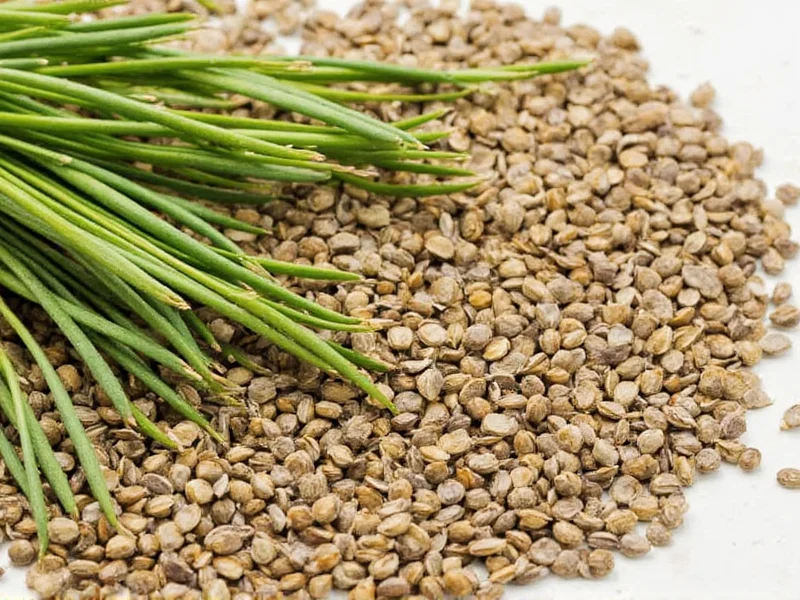Caraway seeds have seasoned kitchens and remedies for millennia, yet many curious cooks and health enthusiasts still wonder about their true origins. These crescent-shaped seeds aren't actually seeds at all—they're the dried fruits of the caraway plant, scientifically known as Carum carvi. Understanding where caraway comes from reveals a fascinating journey from ancient fields to modern spice racks.
The Caraway Plant: Botanical Background
Carum carvi grows as a biennial plant reaching 40-60 cm in height, featuring feathery leaves and small white or pink flowers arranged in umbrella-like clusters called umbels. The plant completes its life cycle over two years: developing leaves and roots in the first season, then flowering and producing fruit in the second year. The characteristic "seeds" people use are technically dry fruits called schizocarps that split into two crescent-shaped mericarps when mature.
Historical Origins and Early Cultivation
Archaeological evidence shows caraway's use dating back to the Stone Age, with seeds discovered in Swiss lake dwellings from 3000 BCE. Ancient Egyptians cultivated caraway for both culinary and medicinal purposes, while Romans spread its cultivation throughout their empire. By the Middle Ages, caraway had become a staple crop across Central and Northern Europe, particularly in what's now Germany, Poland, and the Netherlands. These historical milestones are systematically documented in the National Center for Biotechnology Information's comprehensive review of caraway's ethnobotanical journey (National Center for Biotechnology Information, 2018).
Modern Production Regions
Today, caraway cultivation has expanded globally while maintaining strong roots in its traditional growing regions. The following table shows current major production areas:
| Country | Annual Production (Metric Tons) | Notable Growing Regions |
|---|---|---|
| Canada | 10,000-12,000 | Saskatchewan, Alberta |
| Netherlands | 4,000-5,000 | Friesland, Groningen |
| Germany | 3,000-4,000 | Saxony-Anhalt, Bavaria |
| Poland | 2,500-3,500 | Lower Silesia, Greater Poland |
| Turkey | 1,500-2,000 | Anatolia region |
Climate and Soil Requirements for Caraway Cultivation
Caraway thrives in temperate climates with cool summers and moderate rainfall. The plant prefers well-drained, sandy loam soils with a pH between 6.0 and 7.0. While it can tolerate some frost, extreme heat damages the developing fruits. Farmers typically plant caraway seeds in early spring, allowing the plants to establish roots before winter dormancy. The second-year plants flower in late spring, with seeds maturing by mid-summer.
Harvesting and Processing Methods
Harvesting caraway requires precise timing—farmers collect the plants when the seeds turn brown but before they naturally disperse. Traditional methods involve cutting the entire plant and allowing it to dry in bundles, while modern commercial operations use specialized combines. After harvesting, processors separate the seeds through threshing and winnowing, then clean and sort them before packaging. High-quality caraway maintains its distinctive aroma when stored properly in cool, dark conditions.
Culinary and Medicinal Applications
Chefs worldwide value caraway for its warm, slightly sweet flavor with hints of citrus and pepper. Central European cuisines feature caraway prominently in rye bread, sauerkraut, and cheese. Beyond cooking, traditional medicine has used caraway for digestive support, with modern research exploring its potential benefits for gut health and inflammation reduction. However, the European Medicines Agency specifies critical usage boundaries: caraway is contraindicated for individuals with bile duct obstruction or gallstones, and should be avoided during pregnancy due to insufficient clinical safety data (European Medicines Agency, 2009). The essential oil extracted from caraway seeds also finds applications in natural flavorings and aromatherapy.
Interesting Historical and Cultural Facts
Cultural traditions surrounding caraway reveal its historical importance. Medieval Europeans believed caraway prevented lovers from straying, leading to its inclusion in love potions. In 16th century Germany, brides carried caraway seeds to ensure fidelity. The plant's scientific name Carum derives from the ancient Greek word "karon," while "caraway" entered English through Arabic "al-karawya." These linguistic connections demonstrate caraway's journey along ancient trade routes from its original growing regions.











 浙公网安备
33010002000092号
浙公网安备
33010002000092号 浙B2-20120091-4
浙B2-20120091-4